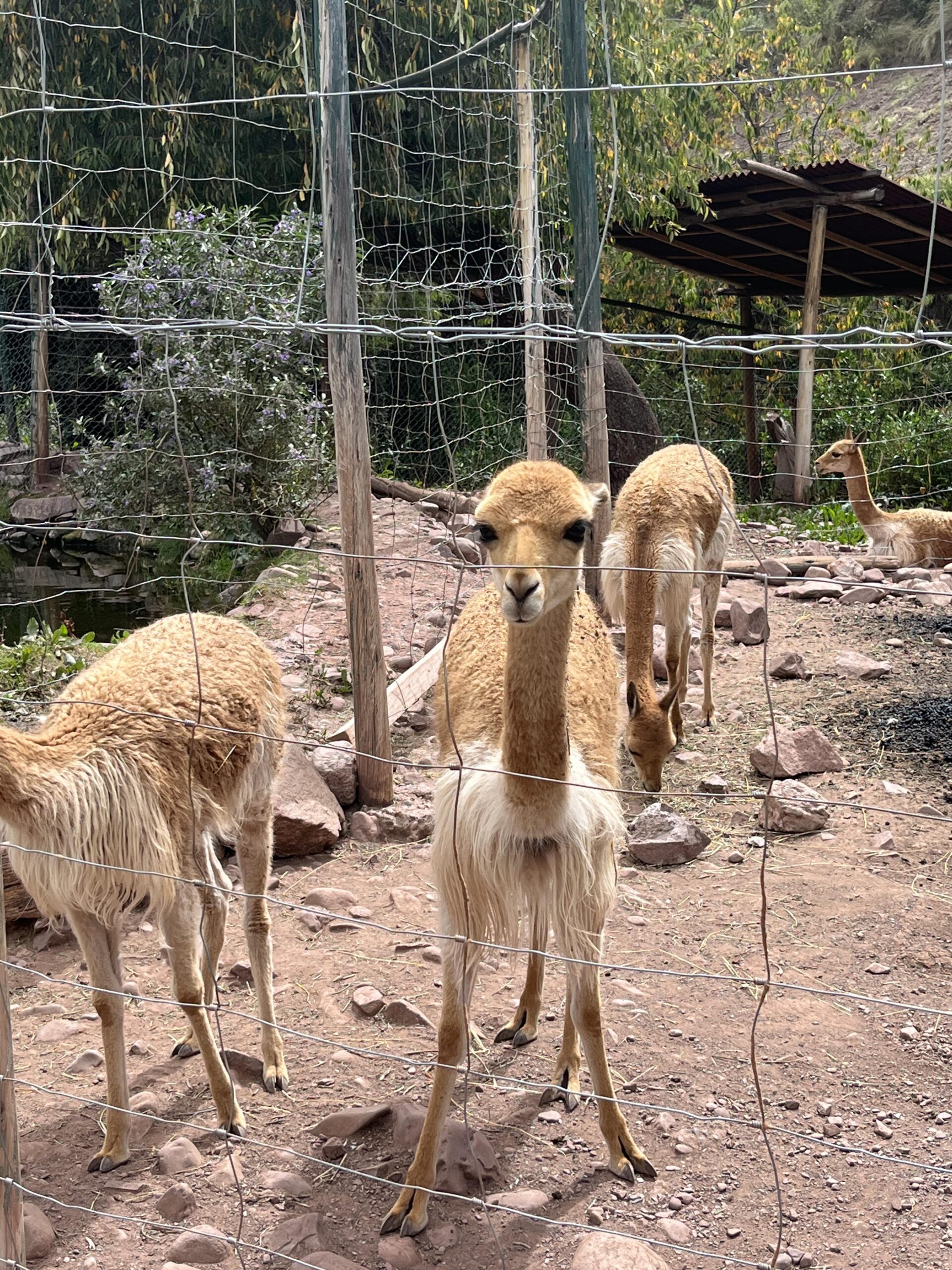If you’re hanging out in Cusco, acclimating before a tour and wanting to get out of the city, I’d highly recommend a visit to the Cochahuasi Animal Sanctuary. Situated between Cusco and the town of Pisaq (Pisac), you’ll find a refuge for endangered and threatened animals local to the region. The sanctuary rescues animals who have been captured and kept as pets or who cannot survive in the wild, helping them with recovery, and if possible, facilitating their safe release.


What is the Cochahuasi Animal Sanctuary?
The sanctuary is a private, family-owned organization founded in 2007 to rescue abused animals, many of whom come from the illicit wildlife trade. The sanctuary provides a refuge for a variety of species, with special focus on the Andean Condor. They work to facilitate the reproduction and release of the Condor, as the species is at risk of extinction in Perú. Their mission is to provide educational activities that promote conservation and appreciation of biodiversity, in the region and beyond.


How do you get to the Cochahuasi Animal Sanctuary?
You can catch public transit from Cusco (it costs about 4-6 soles) and ask to get off at the animal sanctuary at KM 22. You’ll take a colectivo (a shared mini-bus service) to Pisaq from the top of Puputi Street. Ask locals where the colectivos for Pisaq are if you get lost. If you’re short on time, you can also get a taxi or ride-sharing service to take you directly there.
How much does the sanctuary cost?
As of 2023, the sanctuary cost 5 soles for Cusqueños, 15 soles for Peruvians, and 25 soles (less than $7) for foreign visitors. You can pay with cash or credit card, and the proceeds support the sanctuary.
What can you see and do there?
When you arrive, you’re given the option of taking a guided tour with an English or Spanish speaking guide. The guide takes you around the small sanctuary and tells you the stories of the animals and any facts you want to know about them and their care. You’re also allowed to get close to the llamas and alpacas in a petting zoo-type area.

While there, I had the incredible experience of an Andean Condor (the second largest bird in the world) soaring straight over my head and landing behind my shoulder. We were also able to see different wildcats including pumas and Andean mountain cats, as well as monkeys, pygmies, and parrots.
More particular to the region were vicuñas, the wild camelid cousin of llamas and alpacas, and coatis, which look like an adorable cross between a lemur and raccoon (but be careful because they’re quick to snatch your food.)


Afterward, I had some fresh fruit juice and a bite to eat in the sanctuary’s cafe, where you can also taste the most expensive coffee in the world (which is made from coati poop) for the more affordable price of $6.


Pumas, camelids, and Andean mountain cats
While at the sanctuary, the guides taught us about the animals who lived there. Two beautiful pumas, who were extremely thin but steadily gaining strength, had been rescued from a nightclub. The nightclub owners would pump them with drugs to sedate them and offer them up to clubgoers to take pictures. The sanctuary was able to facilitate their rescue and is slowly helping them gain weight with a careful, measured diet.
We also learned about the Camelidae family, which consists of llamas, alpacas, vincuñas, and guanacos. The vicuñas looked like a tiny cross between a camel and an alpaca, and the llamas kept us entertained with their antics in the petting zoo.
My favorite animal was the Andean mountain cat, a small, antisocial wildcat that is not very friendly, but incredibly agile, as they hunt in their rocky, high-altitude climate. Considered a sacred animal by Indigenous Aymara and Quechua people, fewer than 1,500 mountain cats are thought to exist in the wild today.
After your visit
If you have time, you can hop back on the minibus toward Pisaq and visit its legendary artisan market and ruins high above the city. We visited the Inca site at golden hour with magnificent views of the valley far below. After you’ve finished, you can grab a bite at one of the many restaurants in town and then another colectivo back to Cusco.


Leave a Reply